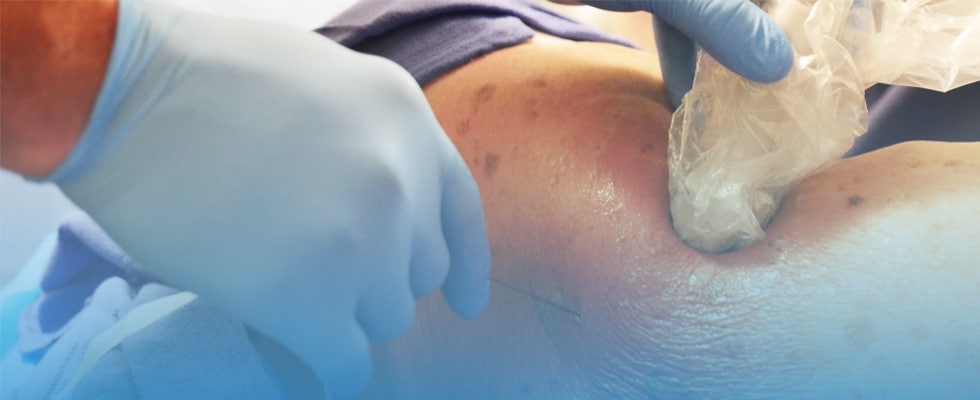
Maverick Medical Education believes that equipping more medical practitioners with the skills to provide a number of nerve blocks for their patients will decrease patient pain and increase patient satisfaction. Maverick Medical Education also believes that ultrasound, in many forms, provides medical practitioners with the knowledge of what is happening inside of a patient’s body, leading to better diagnoses and outcomes. When combining the two, the prognosis of the patient increases, allowing for even better pain management and recovery. How can ultrasound guided nerve blocks be implemented in your practice?
1. Consolidate supplies. The American College of Emergency Physicians found that one of the greatest obstacles to consistently offering nerve blocks to patients, was not having an easy way for medical practitioners to have supplies at hand. Their recommendation is a black bag equipped with every item needed to perform these blocks, but there are alternatives that different departments may explore.
2. Consent provided. Ultrasound guided or not, consent must be provided by the patient or their medical representative.
3. Consult with medical practitioners. Congruently to receiving consent from the patient, a discussion should happen between the medical team to assess what, if any, nerve block would be most helpful and what would limit further medical assistance from taking place. Not every injury is ideal for a nerve block and not every patient needs this level of pain management during their course of treatment.
4. Scan the patient. Because placement of the ultrasound probe is vital to accurate anatomical imaging and measurements, the medical provider doing the scan should be located in an ideal position, allowing for ergonomics and ease of visibility. Ideally, the screen would be located where no turning of the head was needed while observing the scan itself.
5. Cardiac monitoring. If the patient is not already under cardiac monitoring, they should be while the nerve block is being performed and for an additional 10 to 15 minutes, according to the American College of Emergency Physicians.
6. Skin wheal. For additional guidance, place a skin wheal where the injection site is expected to occur.
7. Prepare for block. Depending on the size of the block, decide on a single or two-operator block for best outcome.
As seen in these steps, once trained on the nerve blocks and pain management techniques that are part of several Maverick Medical Education courses, it can be relatively easy to implement ultrasound guided nerve blocks to better provide for your patients. Our team can teach these blocks and your expertise can revolutionize your department, allowing for better prognosis for each of your patients.
To learn more about the courses we offer or to sign up for an upcoming course, contact us today. Your learning can begin today with online modules accessible as soon as you sign up for a course, preparing you for the lab portion where you will have valuable hands-on learning with our Maverick Instructors.

